Data Binding is one of the principle features of Silverlight where elements can be bound to Data, which in this case will be a Collection of Data which can be Saved using IsolatedStorage.
Printer Friendly Download Tutorial (337KB) Download Source Code (7.25KB) Online Demonstration
Step 1
Start Microsoft Visual Web Developer 2010 Express, then Select File then New Project... Select "Visual Basic" then "Silverlight Application" from Templates, select a Location if you wish, then enter a name for the Project and then click OK, see below:

Step 2
New Silverlight Application window should appear, uncheck the box "Host the Silverlight Application in a new Web site" and then select the required Silverlight Version, see below:

Step 3
A Blank Page named MainPage.xaml should then appear, see below:

Step 4
Select Project then Add Reference... The "Add Reference" window should appear, select "System.XML.Linq" from the ".NET" List, see below:
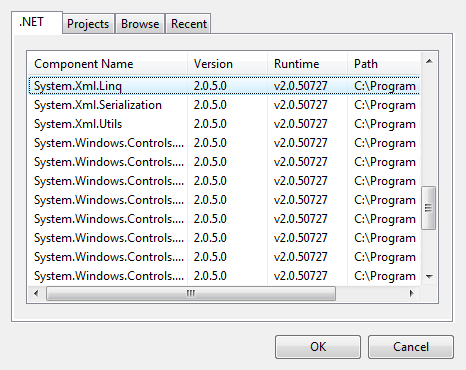
Step 5
Add the Reference to "System.XML.Linq" by Clicking on OK
Select Project then "Add Class...", and select the "Class" Template if not already Selected, then change the "Name" to Music.vb , see below:
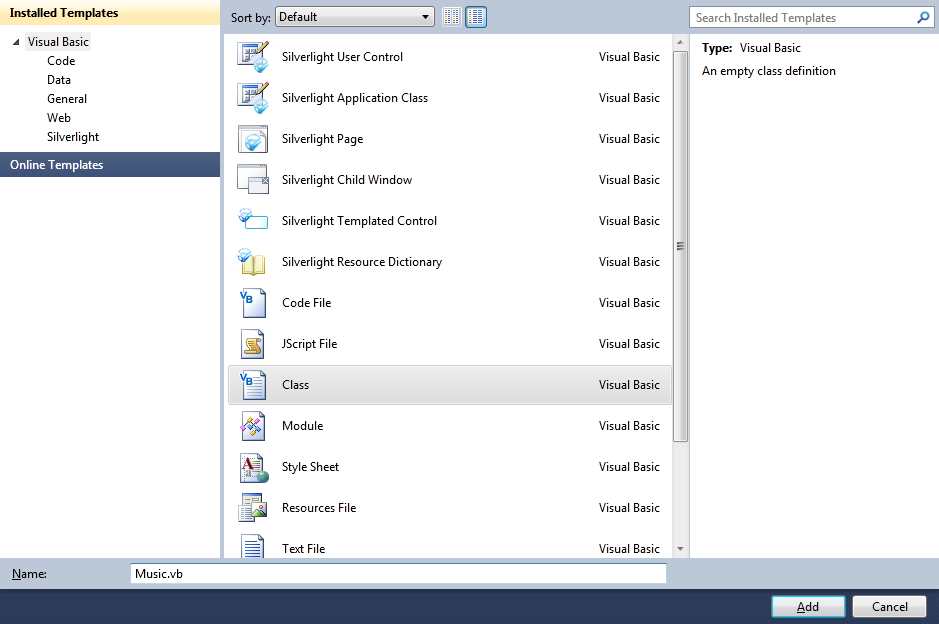
Step 6
Add the new Class to the Project by Clicking on Add, then in the Code View for the Music.vb Class, above the "Public Class Music" line type the following:
Imports System.ComponentModel
See Below:

Step 7
While still in the Code View for the Music.vb Class, below the "Public Class Music" line type the following:
Inherits INotifyPropertyChanged Private _album As String Private _artist As String Private _released As String Private _genre As String Public Event PropertyChanged As PropertyChangedEventHandler _ Implements INotifyPropertyChanged.PropertyChanged
See Below:

Step 8
While still in the Code View for the Music Class, above the "End Class" for "Public Class Music", type the following Subs:
Private Sub NotifyPropertyChanged(ByVal PropertyName As String) RaiseEvent PropertyChanged(Me, New PropertyChangedEventArgs(PropertyName)) End Sub Public Sub New() _album = "Untitled" End Sub
See Below:

Step 9
While still in the Code View for the Music Class, above the "End Class" for "Public Class Music", type the following Properties:
Public Property Album As String Get Return _album End Get Set(ByVal value As String) _album = value NotifyPropertyChanged("Album") End Set End Property Public Property Artist As String Get Return _artist End Get Set(ByVal value As String) _artist = value NotifyPropertyChanged("Artist") End Set End Property Public Property Released As String Get Return _released End Get Set(ByVal value As String) _released = value NotifyPropertyChanged("Released") End Set End Property Public Property Genre As String Get Return _genre End Get Set(ByVal value As String) _genre = value NotifyPropertyChanged("Genre") End Set End Property
See Below:
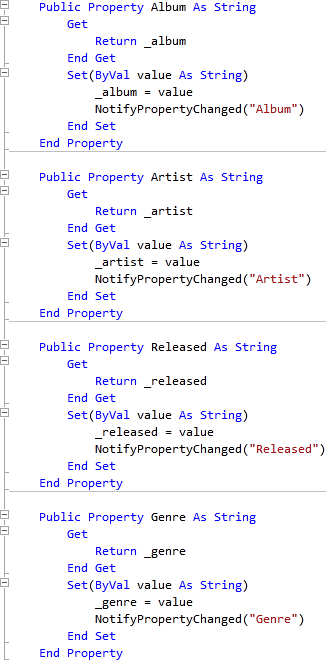
Step 10
Return to the MainPage Designer View by selecting the "MainPage.xaml" Tab.
Then from the All Silverlight Controls section in the Toolbox select the Canvas control:
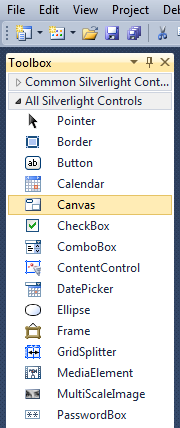
Step 11
Draw a Canvas on the Page then in the XAML Pane above the "</Grid>" then change the "Canvas1" line to the following:
<Canvas Height="35" Width="400" VerticalAlignment="Top" HorizontalAlignment="Left" Name="Toolbar"></Canvas>
See below:
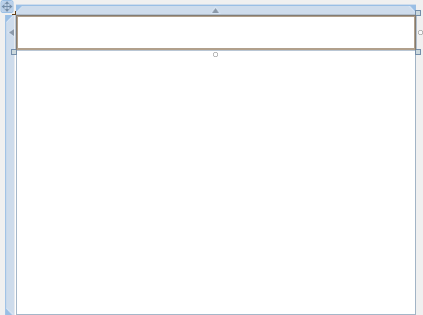
Step 12
Then from the Common Silverlight Controls section in the Toolbox select the Button control:
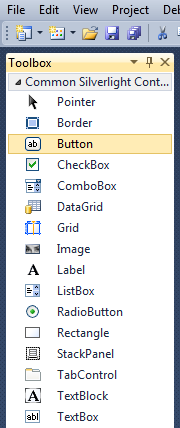
Step 13
Draw Three Buttons on the "Toolbar" Canvas by dragging the Buttons from the Toolbox onto the Canvas then in the XAML Pane inbetween the "<Canvas>" and "</Canvas>" tags change the "<Button>" lines to the following:
<Button Canvas.Left="6" Canvas.Top="6" Height="23" Width="75" Name="Add" Content="Add"/> <Button Canvas.Left="87" Canvas.Top="6" Height="23" Width="75" Name="Remove" Content="Remove"/> <Button Canvas.Left="168" Canvas.Top="6" Height="23" Width="75" Name="Save" Content="Save..."/>
See below:
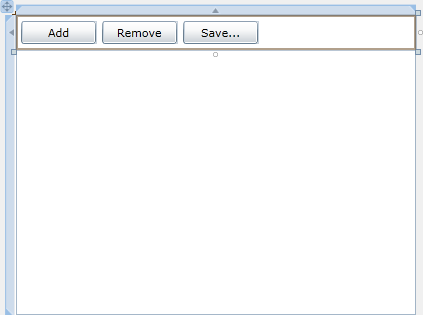
Step 14
Then from the Common Silverlight Controls section in the Toolbox select the DataGrid control:

Step 15
Draw a DataGrid on the Page, below the Canvas with the Buttons, and in the XAML Pane above the "</Grid>" and below the "</Canvas>" change "DataGrid1" to the following:
<data:DataGrid Height="265" Width="400" Margin="0,35,0,0" VerticalAlignment="Top" HorizontalAlignment="Left" ItemsSource="{Binding}" Name="Data"/>
See below:
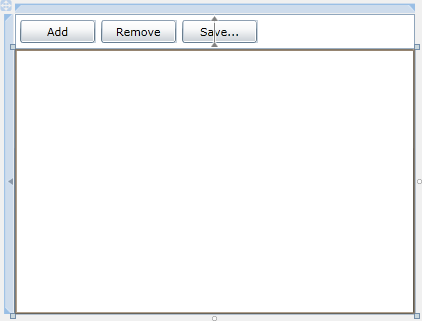
Step 16
Right Click on the Page or the entry for "MainPage.xaml" in Solution Explorer and choose the "View Code" option. In the Code View above the "Partial Public Class MainPage" line type the following:
Imports System.Collections.ObjectModel Imports System.IO.IsolatedStorage Imports System.Xml.Linq
See Below:

Step 17
While still in the Code View for MainPage.xaml, below the "Inherits UserControl" line type the following:
Public Filename As String = "Music.xml" Public Property Collection As New ObservableCollection(Of Music)
See Below:

Step 18
While still in the Code View, in the "Public Sub New()" constructor below the "InitializeComponent()" line type the following:
Using Storage As IsolatedStorageFile = IsolatedStorageFile.GetUserStoreForApplication If Storage.FileExists(Filename) Then ' Open File Using OpenFile As New IsolatedStorageFileStream(Filename, IO.FileMode.Open, Storage) Dim _reader As XmlReader = XmlReader.Create(OpenFile) Dim _doc As XDocument = XDocument.Load(_reader) Collection.Clear() For Each Element As XElement In _doc.Root.<music> Collection.Add(New Music With { .Album = Element.<album>.Value, .Artist = Element.<artist>.Value, .Released = Element.<released>.Value, .Genre = Element.<genre>.Value}) Next End Using Else ' New File Collection.Add(New Music With { .Album = "Tubular Bells", .Artist = "Mike Oldfield", .Released = "1973", .Genre = "Prog Rock"}) End If End Using Data.DataContext = Collection
See Below:
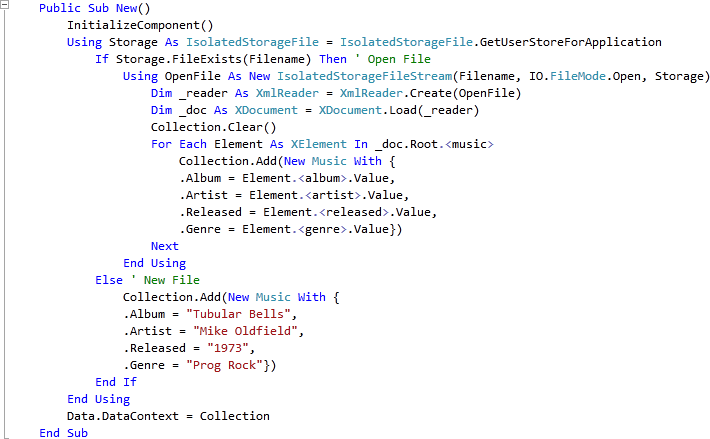
Step 19
Return to the Designer View by selecting the "MainPage.xaml" Tab, or Right Click on the Page or the Entry for "MainPage.xaml" in Solution Explorer and choose the "View Designer" option.
Double Click on the "Add" Button and type in the Add_Click Sub:
Collection.Add(New Music)
See Below:

Step 20
Return to the Designer View by selecting the "MainPage.xaml" Tab, or Right Click on the Page or the Entry for "MainPage.xaml" in Solution Explorer and choose the "View Designer" option.
Double Click on the "Remove" Button and type in the Remove_Click Sub:
Collection.Remove(CType(Data.SelectedItem, Music))
See Below:

Step 21
Return to the Designer View by selecting the "MainPage.xaml" Tab, or Right Click on the Page or the Entry for "MainPage.xaml" in Solution Explorer and choose the "View Designer" option.
Double Click on the "Save..." Button Control and type in the Save_Click Sub:
Dim _doc As XDocument = <?xml version="1.0" encoding="utf-8"?> <collection> <%= From Item As Music In Collection Select <music> <album><%= Item.Album.Trim %></album> <artist><%= Item.Artist.Trim %></artist> <released><%= Item.Released.Trim %></released> <genre><%= Item.Genre.Trim %></genre> </music> %> </collection> Using Storage As IsolatedStorageFile = IsolatedStorageFile.GetUserStoreForApplication Using SaveFile As New IsolatedStorageFileStream(Filename, IO.FileMode.Create, Storage) _doc.Save(SaveFile) End Using End Using
See Below:
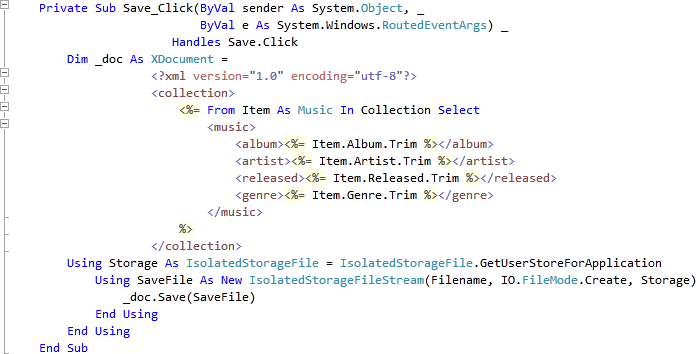
Step 22
Save the Project as you have now finished the Silverlight application. Select Debug then Start Debugging or click on Start Debugging:
After you do, the following will appear in a new Web Browser window:
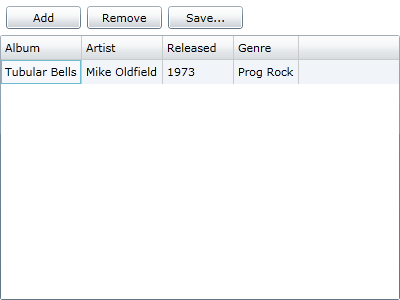
Step 23
Click on "Add" then click on the "Untitled" Box to enter New Album Data, which can be entered into all of the Boxes and can then be Saved, see below:
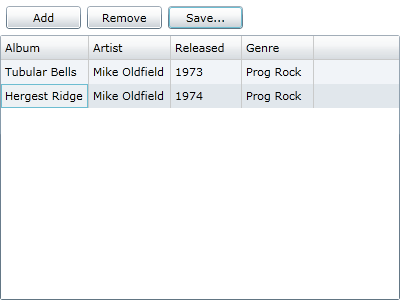
Step 24
Close the Application and Browser window by clicking on the Close Button ![]() on
the top right of the Application Window and Web Browser to Stop the application.
on
the top right of the Application Window and Web Browser to Stop the application.
This was a simple Data Binding example, it uses LINQ to read the Data from IsolatedStorage - which is a feature of Silverlight, plus also Saves Data with this done using the inline-XML syntax supported in Visual Basic. This example could be used as the basis of any Data-based application, make it your own!



